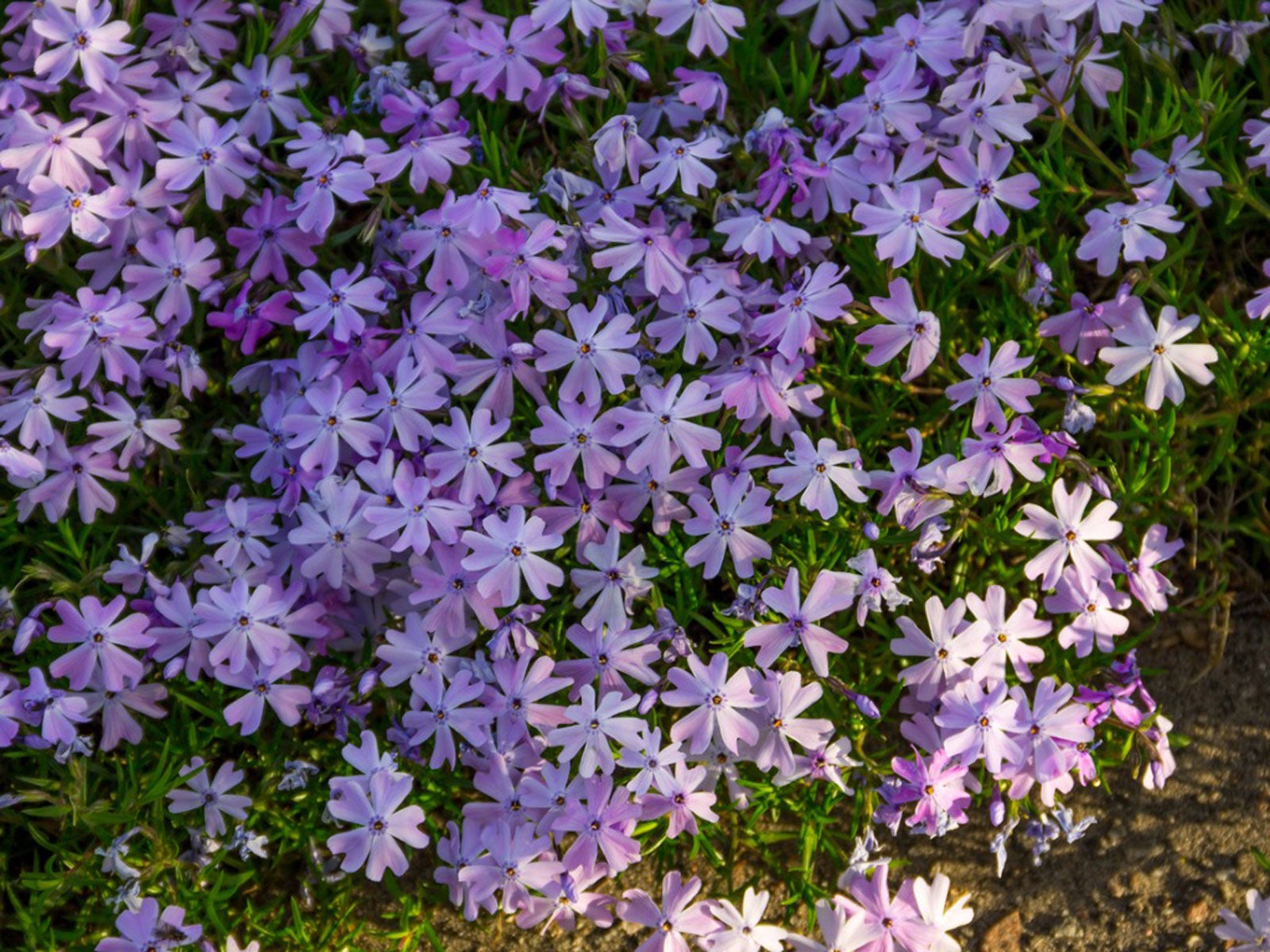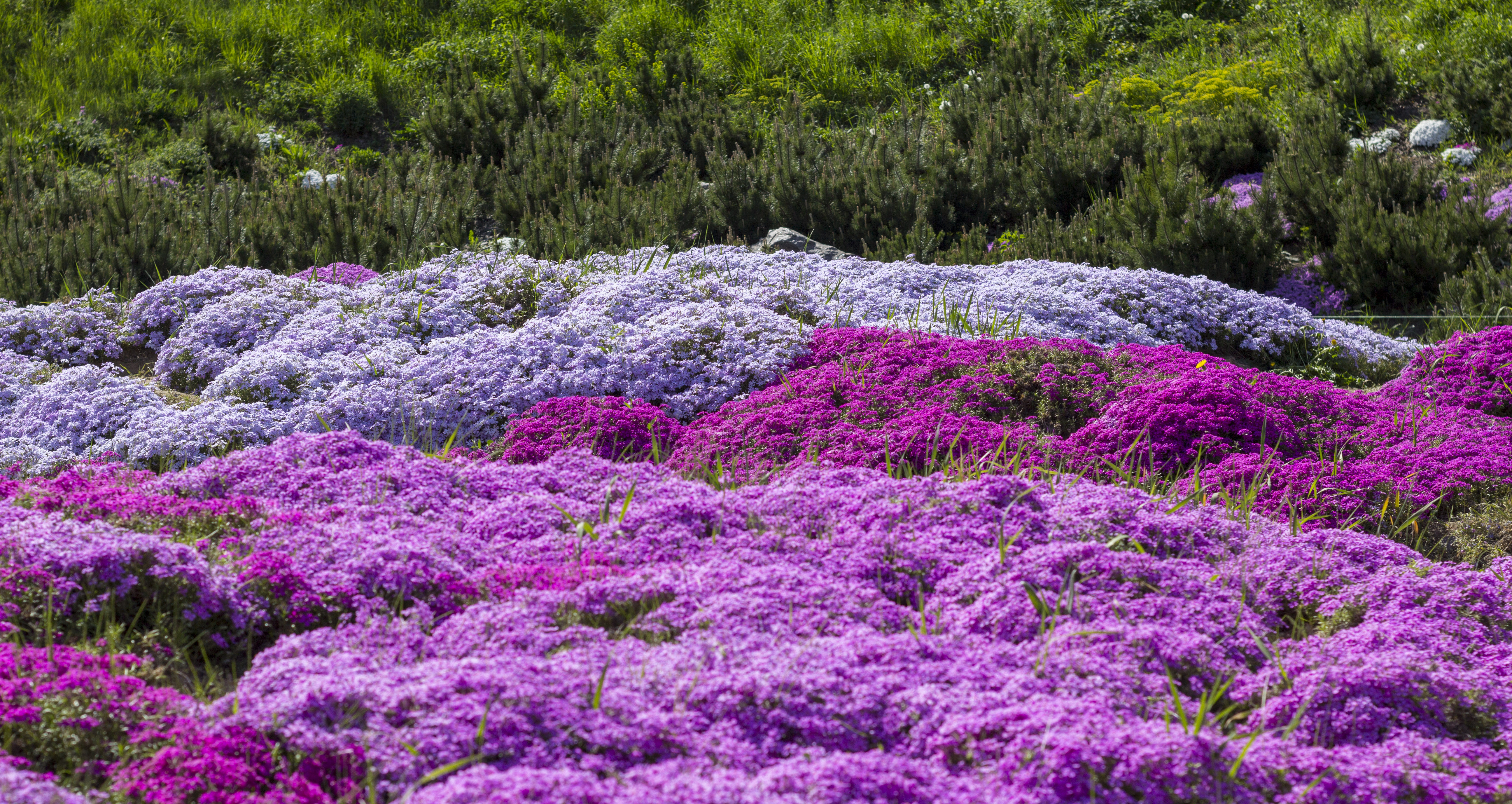Creeping Phlox: The Lowmaintenance Ground Cover That Blooms All Summer
Creeping phlox (Phlox subulata), also known as moss pink or moss phlox, is a low-maintenance ground cover that blooms all summer. It is a North American native plant that is hardy in Zones 3-8. Creeping phlox is known for its fragrant, colorful flowers that come in a variety of shades, including pink, purple, red, white, and blue. The flowers are typically about an inch in diameter and bloom in clusters. Creeping phlox is a slow-growing plant that forms dense mats of foliage. The leaves are small and narrow, and they are a gray-green color.
Creeping phlox is a versatile plant that can be used in a variety of landscape settings. It is ideal for use as a ground cover, edging, or border plant. Creeping phlox can also be used to fill in bare spots in the garden or to create a low-maintenance walkway.
Creeping phlox is a relatively easy plant to care for. It prefers full sun but can tolerate partial shade. It is also drought tolerant once established. Creeping phlox does not require a lot of fertilizer, but it may benefit from a light application of fertilizer in the spring. Creeping phlox does not need to be pruned often, but it may be necessary to trim it back in the fall to prevent it from becoming overgrown.
Creeping phlox is a deer-resistant plant, making it a good choice for gardens that are frequented by deer. It is also a relatively pest-free plant. However, it may be susceptible to powdery mildew, especially in humid climates. If powdery mildew does occur, it can be treated with a fungicide.
Creeping phlox is a relatively long-lived plant that can last for many years with proper care. It is a beautiful and low-maintenance plant that is a valuable addition to any garden.
Main Content
Here are some additional information about creeping phlox:
- Creeping phlox is a self-seeding plant, so it will spread on its own over time. This can be a good thing if you are looking for a ground cover that will quickly fill in an area. However, it can also be a problem if you do not want the plant to spread too much.
- Creeping phlox is tolerant of a variety of soil types, but it prefers well-drained soil. It is also tolerant of poor soil conditions, but it may not bloom as well in poor soil.
- Creeping phlox is deer-resistant, but it may be susceptible to other pests, such as slugs and snails. If you have a problem with pests, you may need to use an insecticide to control them.
- Creeping phlox is a relatively low-maintenance plant, but it will benefit from some basic care. Water it regularly, especially during hot, dry weather. Fertilize it in the spring with a balanced fertilizer. And trim it back in the fall to prevent it from becoming overgrown.
Conclusion
Creeping phlox is a beautiful and low-maintenance ground cover that is a valuable addition to any garden. It is easy to care for and will bloom all summer long. If you are looking for a plant that is both attractive and low-maintenance, then creeping phlox is a great choice.
Creeping phlox is a beautiful, low-maintenance ground cover that can add color and interest to your garden all summer long. With its bright, fragrant flowers and easy-care requirements, creeping phlox is a great choice for gardeners of all skill levels.
If you're interested in learning more about how to care for creeping phlox and how to get it to bloom all summer long, I recommend visiting Garden Wiki. This website has a wealth of information on creeping phlox, including planting tips, care instructions, and troubleshooting advice.
In addition to its detailed articles, Garden Wiki also features a helpful forum where you can ask questions and get advice from other gardeners. Whether you're a beginner or an experienced gardener, Garden Wiki is a great resource for all things creeping phlox.
FAQ of creeping phlox bloom all summer
1. Does creeping phlox bloom all summer?
No, creeping phlox typically blooms for only 3-4 weeks in the spring. However, there are some varieties that can bloom for a longer period of time, up to 6 weeks. These varieties are often labeled as "repeat bloomers."
2. How can I get my creeping phlox to bloom longer?
There are a few things you can do to help your creeping phlox bloom longer:
- Plant it in full sun. Creeping phlox needs at least 6 hours of sunlight per day to bloom well.
- Fertilize it regularly. Creeping phlox is a heavy feeder, so it needs to be fertilized every 6-8 weeks during the growing season. Use a balanced fertilizer, such as a 10-10-10 fertilizer.
- Deadhead spent blooms. Deadheading will encourage the plant to produce more blooms.
- Water it regularly. Creeping phlox needs to be watered regularly, especially during hot, dry weather.
3. Why isn't my creeping phlox blooming?
There are a few reasons why your creeping phlox might not be blooming:
- It might not be getting enough sunlight. Creeping phlox needs at least 6 hours of sunlight per day to bloom well.
- It might not be getting enough water. Creeping phlox needs to be watered regularly, especially during hot, dry weather.
- It might not be getting enough fertilizer. Creeping phlox is a heavy feeder, so it needs to be fertilized every 6-8 weeks during the growing season.
- It might be diseased or infested with pests. If your creeping phlox is not blooming and you see any signs of disease or pests, treat it immediately.
4. What are some tips for caring for creeping phlox?
In addition to the tips above, here are some other tips for caring for creeping phlox:
- Prune it in the fall after it has finished blooming. This will help to keep it tidy and encourage new growth in the spring.
- Divide it every 3-4 years to keep it healthy and vigorous.
- Mulch around it to help retain moisture and suppress weeds.
5. How can I propagate creeping phlox?
Creeping phlox can be propagated by division or by cuttings.
To propagate by division, simply dig up a mature plant and divide it into several smaller sections. Each section should have at least a few roots and some leaves. Replant the divisions in a well-drained soil and water them regularly.
To propagate by cuttings, take 4-6 inch cuttings from a healthy plant in the spring or fall. Remove the lower leaves from the cuttings and dip them in rooting hormone. Plant the cuttings in a well-drained potting mix and water them regularly. Keep the cuttings in a warm, shady location and they should root in a few weeks.
Image of creeping phlox bloom all summer
Here are 5 different images of "creeping phlox bloom all summer" from Pinterest:
- Image 1: A patch of creeping phlox in full bloom, with a variety of colors from white to pink to purple. The flowers are clustered together in small groups, and the plant has a low, spreading growth habit.

- Image 2: A close-up of a single creeping phlox flower. The petals are a light pink color, and they are slightly cupped in shape. The center of the flower is filled with yellow stamens.

- Image 3: A creeping phlox plant in a flower bed. The plant is surrounded by other flowers, including daisies, pansies, and marigolds. The creeping phlox adds a splash of color to the flower bed, and it helps to fill in the spaces between the other plants.

- Image 4: A creeping phlox plant in a pot on a patio. The plant is in full bloom, and the flowers are a beautiful shade of purple. The creeping phlox adds a touch of elegance to the patio, and it can be enjoyed all summer long.

- Image 5: A creeping phlox plant in a hedgerow. The plant is covered in flowers, and the hedgerow is a riot of color. The creeping phlox provides a beautiful backdrop for other plants in the garden, and it can also be used to create a privacy screen.

Post a Comment for "Creeping Phlox: The Lowmaintenance Ground Cover That Blooms All Summer"